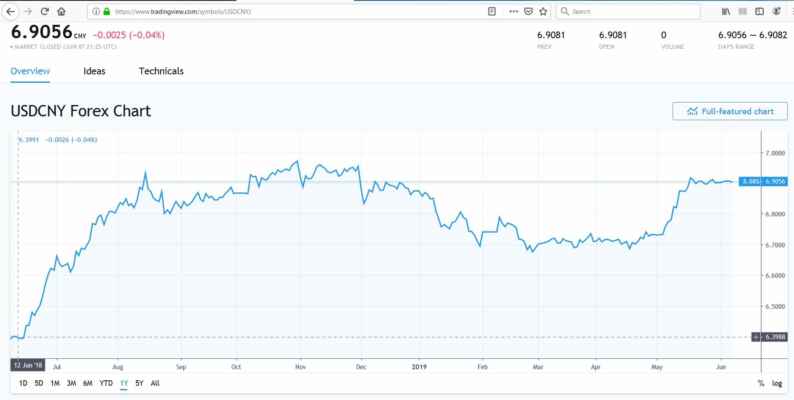Jura The idiot
General
now I read this sophisticated one, with Bill Clinton, prisoner's dilemma, etc. inside:
How to understand three fundamental differences in China-US trade issues
Source:Global Times Published: 2019/6/7 16:43:28
How to understand three fundamental differences in China-US trade issues
Source:Global Times Published: 2019/6/7 16:43:28
The China-US trade talks have fallen back into a stalemate. The US has pushed a negotiation that was approaching cooperative equilibrium back to a prisoner's dilemma that could harm both sides. The US unilaterally lifted tariffs on Chinese imports and upgraded the trade war into a technology war.
It not only undermines bilateral economic interests and the global industrial chain, but also brings huge challenges to the world's technological advances and human development.
China has held its bottom line and stands on three issues including completely canceling the tariffs, a reasonable purchasing amount and safeguarding the country's core interests and dignity.
The US' use of the Section 301 investigation report as evidence for punitive tariffs on China is unsound. The accusation of China's forced technology transfer made in the report lacks professional and substantial evidence. Also, the report didn't distinguish between government behavior and companies' behavior. Besides, technology related requirements are not limited to foreign companies. They work the same way with the Chinese firms. And the US accused China of taking key technology as consideration during the approval process of Chinese companies investing overseas. This is also not true.
China is not afraid of the US' tariff threat. A research team from the College of Economics and Management at China Agricultural University has simulated the economic effects of the US tariffs on $200 billion worth of Chinese products and found economic indicators on both sides are damaged.
Chinese GDP could be down 0.657 percent while it could drop 0.004 percent for the US. The world GDP will decrease 0.123 percent as a result. Manufacturing jobs in China will be reduced by 1.028 percent, 0.652 percent in the US and 0.28 percent in the world.
The agriculture industry is one key area that was targeted by the US, but agricultural products make up minimal shares of China's total exports to the US. Another target is light industries such as textile, chemistry, machinery and daily commodities. Those sectors, however, have foreign investment elements and often obtain bigger portions of added value. The negative influence on Chinese companies is reduced.
Overall, before taking China's countermeasures into account, China lost more than the US, but the US economy absolutely will not stay intact. Moreover, the move will hurt the world economy.
China announced retaliatory measures by raising tariffs on $60 billion of US products. The modeling analysis showed the counterattack will damage the US economy by a large margin.
China's retaliation will cause the US GDP to drop 0.067 percent, while China's will dip 0.622 percent. The spread of reduction on manufacturing jobs between the two countries significantly narrows with the US decreasing 0.907 percent and China 1.046 percent. The world economy will suffer more with a GDP decrease of 0.134 percent.
The large purchasing orders the US demands that China make have violated rules of market rules and international trade. Looking back in history, the US and Japan had trade frictions in the 1980s and 90s. There was a short period of time when the US asked Japan to adopt voluntary export restraints due to the then US president Bill Clinton pushing for a result-oriented solution. However, the proposal was widely criticized.
Imposing an export or import restraint by itself is very random and discriminatory. It challenges the open and free trade and international trade system. The restraint was aborted due to strong opposition from Japan.
China actively expanded its imports from the US because it meets China's need for economic development and Chinese people are consuming more. Meanwhile, China is making efforts to open its market since the country is trying to shoulder the responsibility of being a major player.
Moreover, the combination of purchases should be in line with China's market demand. The US has set up barriers for China to purchase high-tech products, intellectual property and educational services. This is the real reason that limits China importing from the US.
The China-US trade and economic conflict contains two components - one part can be resolved and the other cannot. If the two parties can come back to the table, they should work out the conflicts that can be resolved and hold onto the conflicts that may not be settled any time soon.
Since 1974, The US has initiated 125 cases of Section 301 investigations into its trade partners. The focusing issue of investigations has moved from tariffs, quota and discriminatory treatments to more policy related issues such as government procurement, industrial policy and subsidies, as well as institutional issues such as intellectual property right (IPR) protection and monopoly.
China-US trade talks have gone beyond the tariff issue and structural problems, halting China's technology development and bilateral communication. In fact, China has been opening even faster, taking action on state-owned enterprise reforms, new investment laws, market entry and IPR protection. The US government, on the other hand, ignores efforts China has been making and is trying to force China to meet their unreasonable demands, though the trade conflict did not fill the trade gap as the US expected.
With China enforcing its countermeasures, the US will most likely end up with an empty hand. To make matters worse, due to the US deviating from negotiation consensus, it has dragged both sides to a bad equilibrium of the prisoner's dilemma. Only if two countries meet each other halfway, address each other's concerns based on mutual respect and reach a deal that benefits both, can they achieve the best outcome for both and the world.

